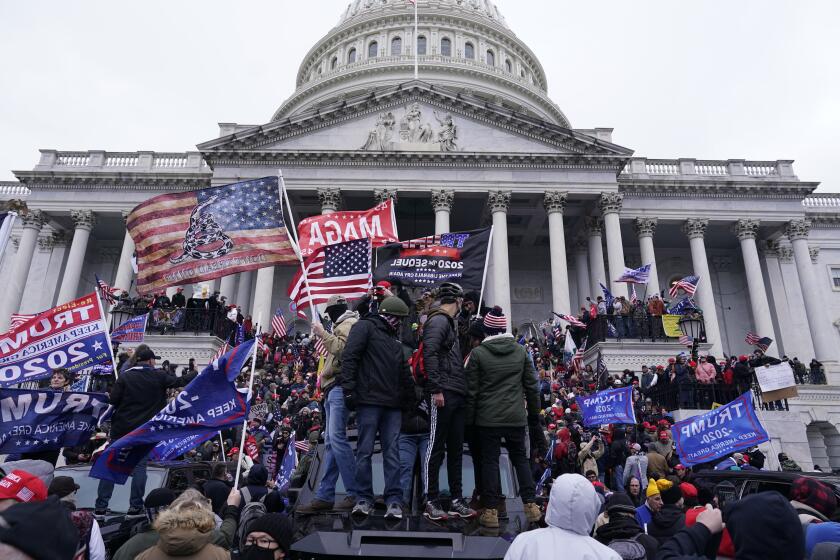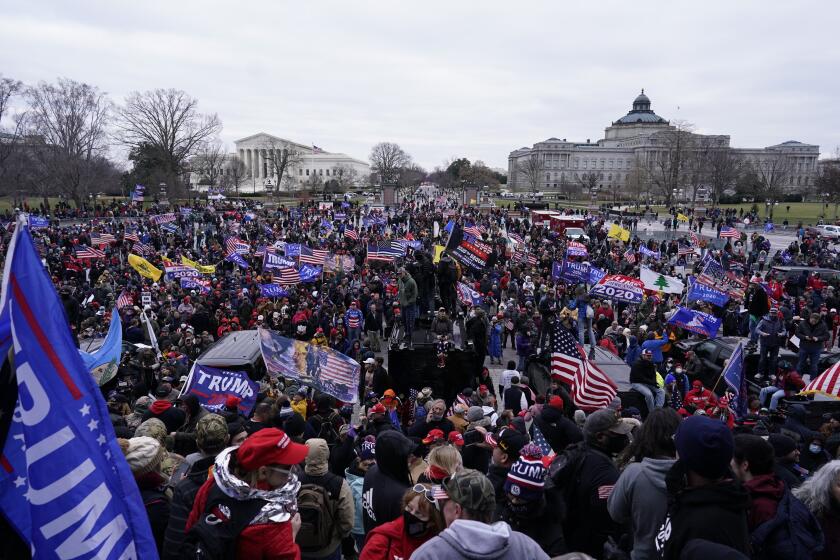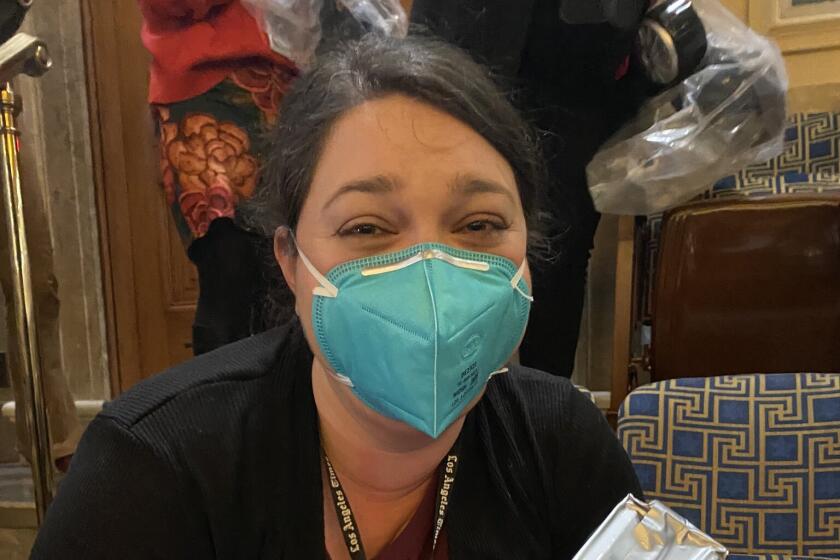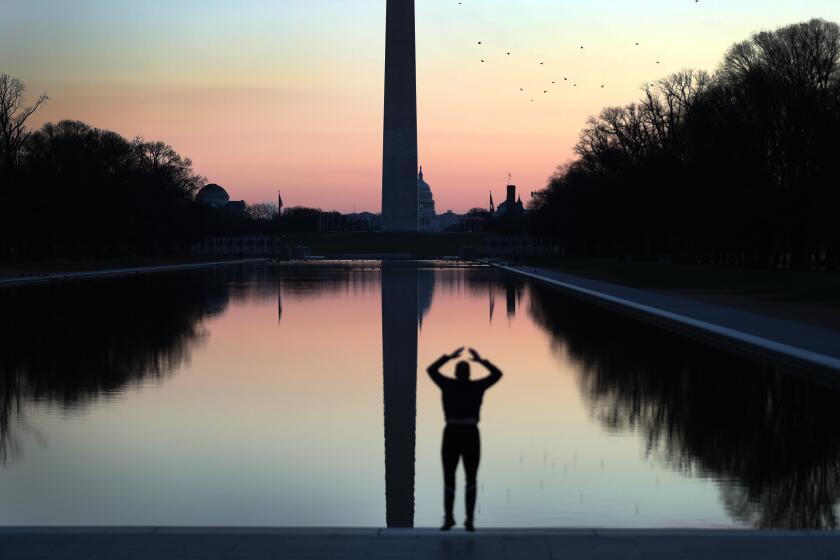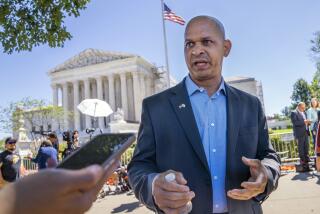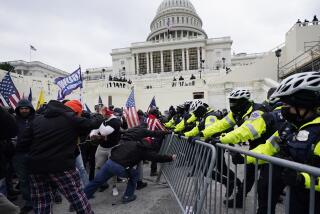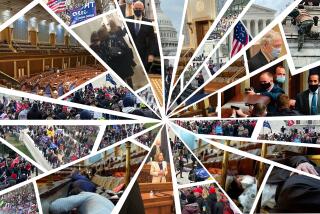Capitol Police rejected offers of federal help to quell rioting
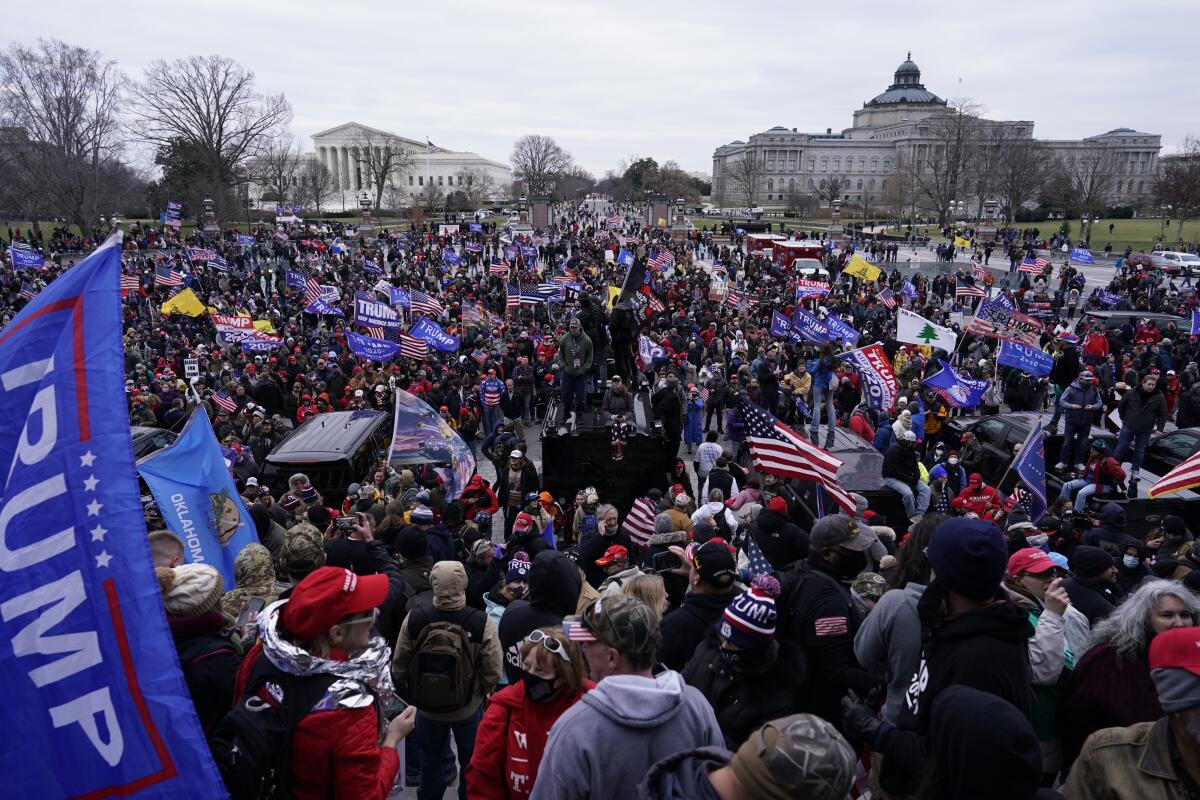
Three days before the pro-President Trump riot at the Capitol, the Pentagon asked the U.S. Capitol Police if it needed National Guard manpower. And as the mob descended on the building Wednesday, Justice Department leaders reached out to offer up FBI agents. The police turned them down both times, according to a Defense official and two people familiar with the matter.
Capitol Police had planned for a free-speech demonstration and didnât need more help, those three told the Associated Press. The police werenât expecting what actually happened â an insurrection.
But the Capitol ended up being overrun, overwhelming a law enforcement agency sworn to protect the lawmakers inside. Four rioters died, including one who was shot inside the building.
There had been plenty of warnings. Plenty of time to prepare. Plenty of money to do it.
In the wake of the mob attack on the U.S. Capitol, the top two Democrats in Congress â Nancy Pelosi and Charles Schumer â called for the removal of President Trump from office.
The failure raised serious questions over security at the Capitol and the treatment of mainly white Trump supporters who were allowed to roam through the building, compared with the Black and brown protesters across the country who demonstrated last year over police brutality.
By the day after the rampage, the House sergeant at arms, the chief security officer for the House of Representatives, had resigned and House Speaker Nancy Pelosi (D-San Francisco) had called for the resignation of the Capitol Police chief.
âThere was a failure of leadership at the top,â Pelosi said.
Sen. Charles E. Schumer (D-N.Y.), the incoming Senate majority leader, said he will fire the Senate sergeant at arms.
The Capitol had been closed to the public since March because of the COVID-19 pandemic, which has killed more than 364,000 people in the United States. In normal times, the building is open to the public and lawmakers pride themselves on their availability to their constituents.
Itâs not clear how many Capitol Police officers were on duty Wednesday. There are 2,300 officers who patrol 16 acres of ground and protect the 435 House members, 50 senators and their staffs. By example, the city of Minneapolis has about 840 uniformed officers for a population of 425,000 across more than 6,000 acres of land.
The Capitol Police has an operating budget of $460 million and has experience with high-security, high-stakes moments. It is used to managing large crowds and large events such as the inauguration, the State of the Union and mass demonstrations.
Tweets and time stamps offer a timeline of the events that led to a pro-Trump mob storming the Capitol building hours after the president spoke at a rally nearby.
There were signs for weeks that violence could strike on Jan. 6, when Congress convened for a joint session to finish counting the electoral college votes that would formalize Democrat Joe Bidenâs election as president.
On far-right message boards and in pro-Trump circles, plans were being made.
The leader of the far-right extremist group Proud Boys was arrested coming into the nationâs capital this week on a weapons charge for carrying empty high-capacity magazines emblazoned with his groupâs logo. He admitted to police that he made statements about rioting in the District of Columbia, local officials said.
Trump and his allies were perhaps the biggest megaphones, encouraging protesters to turn out in force and support his false claim that the election had been stolen from him. He egged them on during a rally shortly before they stormed the Capitol and rioted. His personal attorney Rudolph W. Giuliani called for âtrial by combat.â
But the Capitol Police had set up no hard perimeter around the Capitol. Officers were focused on one side where lawmakers were entering to vote to certify Bidenâs win.
Barricades on the plaza to the building were set up, but police retreated from the line and a mob of people broke through. Lawmakers, at first unaware of the security breach, continued their debate. Soon they were cowering under chairs. Eventually they were escorted from the House and Senate. Journalists were left alone in rooms for hours as the mob attempted to break into barricaded rooms.
I was working at the Capitol when the Trump D.C. riots hit.
âThe violent attack on the U.S. Capitol was unlike any I have ever experienced in my 30 years in law enforcement here in Washington, D.C.,â Capitol Police Chief Steven Sund said. He said there had been a robust plan for what he had expected would be a free-speech demonstration. âBut make no mistake â these mass riots were not 1st Amendment activities; they were criminal riotous behavior.â
D.C. Mayor Muriel Bowser had warned of impending violence for weeks, and businesses had closed in anticipation. She requested National Guard help from the Pentagon on Dec. 31, but the Capitol Police turned down the Jan. 3 offer from the Defense Department, according to Kenneth Rapuano, assistant Defense secretary for homeland security.
Federal officials, who were harshly criticized for the law enforcement crackdown on peaceful protests last June near the White House, were intent on avoiding any appearance that the federal government was deploying active-duty or National Guard troops against Americans.
The Justice Departmentâs offer for FBI support as the protesters grew violent was rejected by the Capitol Police, according to the two people familiar with the matter. They were not authorized to publicly discuss the matter and spoke on condition of anonymity.
By then, it was too late.
Officers from the Metropolitan Police Department descended. Agents from nearly every Justice Department agency, including the FBI, were called in. So was the Secret Service and the Federal Protective Service. The Bureau of Alcohol, Tobacco, Firearms and Explosives sent two tactical teams. Police from as far away as New Jersey arrived to help.
It took four hours to disperse the rioters from the Capitol complex. By then, they had roamed the halls of Congress, posed for photos inside hallowed chambers, broken through doors, destroyed property and taken photos of themselves doing it. At least 80 people were arrested, but it will take time to sort through all the footage to determine who should be charged and with what, officials said.
In the aftermath, a 7-foot fence is being put up around the Capitol grounds for at least 30 days. The Capitol Police will conduct a review of the mayhem, as well as their planning and policies. Lawmakers plan to investigate how authorities handled the rioting.
Capitol workers clean up and remove damaged furniture following the riot by President Trumpâs supporters at the Capitol.
More to Read
Get the L.A. Times Politics newsletter
Deeply reported insights into legislation, politics and policy from Sacramento, Washington and beyond. In your inbox three times per week.
You may occasionally receive promotional content from the Los Angeles Times.
